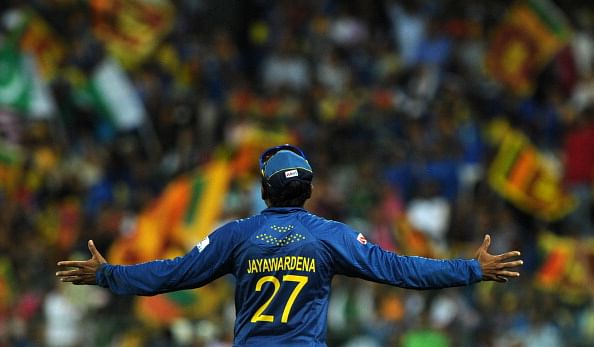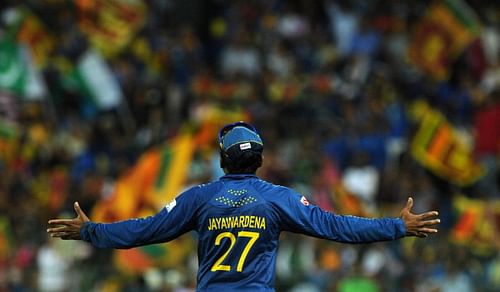
Mahela Jayawardene: The silent guardian of the Lankan lions!

He went down on his left knee and tried to paddle-sweep the ball over the short fine leg fielder. He misjudged the length, mistimed it and only managed to toe-end it towards mid wicket. He took off for a single and reached the non-striker’s end with the fielder missing the stumps by inches. Had that throw hit, he would have been denied a milestone and would have been stranded on 10,999. After completing the single, he raised his bat and the Sri Lankan contingent in the stadium acknowledged his feat with mild applause – that’s Mahela Jayawardene for you, always there but hardly noticed.
With 10,000 Test runs, 11,000 ODI runs, a highest of 374 in Test cricket and hundreds in all three formats of the game, Jayawardene sits comfortably among the finest batsmen of his generation but he is not considered as a modern day “great”. He has never received the deserved acclaim nor has he created the hype that most of his contemporaries have. His achievements have gone mostly unnoticed and have been celebrated with much lesser fanfare than they were for Sachin Tendulkar, Brian Lara, Ricky Ponting, Rahul Dravid, Jacques Kallis or even his compatriot Kumara Sangakkara.
His achievement may not have received the deserving accolades but there are not many sights in cricket as visually pleasing as watching Jayawardene in action. His movement at the crease oozes an abundance of class and his simple philosophy of playing late and playing straight is head and shoulders above most batsmen who have graced the gentlemen’s game. If the drives through cover and the whipping flicks past mid-wicket are hallmarks of a master craftsman, the cut behind the wicket, played at the last possible moment when the ball is well past the bat, personifies languid grace.
Sri Lanka has always been blessed with batsmen of the highest class, right from the days of Mahadevan Sathasivam, Duleep Mendis, Ranjan Madugalle and Roy Dias, down to the absolute genius of Aravinda de Silva and Sanath Jayasuriya. However, the Sri Lankan willow power stamped its world-wide authority with the entry of two extraordinary talented gentlemen in the back end of the 90s. Mahela Jayawardene, along with his partner-in-crime Kumara Sangakkara, rewrote the batting history of the island nation. If the flamboyant southpaw added solidity and consistency to the batting line-up, the diminutive right-hander wrapped it with an envelope of class.
Labeled as the “next Aravinda de Silva”, Jayawardene made his Test debut in 1997. With an average of over 45 in his first 25 Tests, he had an impressive start to his Test career. However, it was only in 2001 that he added an extra gear to his batting, and the period from 2003-2007 saw him announce himself on the international scene with 12 centuries. In July 2006, he set the record for the highest score by a Sri Lankan batsman when he piled up a mammoth 374 against the South Africans.
Technically, Jayawardene has been blessed with a strong defence with generous dollops of style and elegance dovetailed with smooth stroke-making ability. In an era where most batsmen are attuned to bludgeoning the cricket ball a la a Tarantino-movie, Jayawardene’s batting is right out of the Nolan cult – it blossoms with time and keeps growing on the viewer as it goes on. His batting is easy on the eye and his innings flow as as a masterly edited montage devoid of jump cuts and jarring.